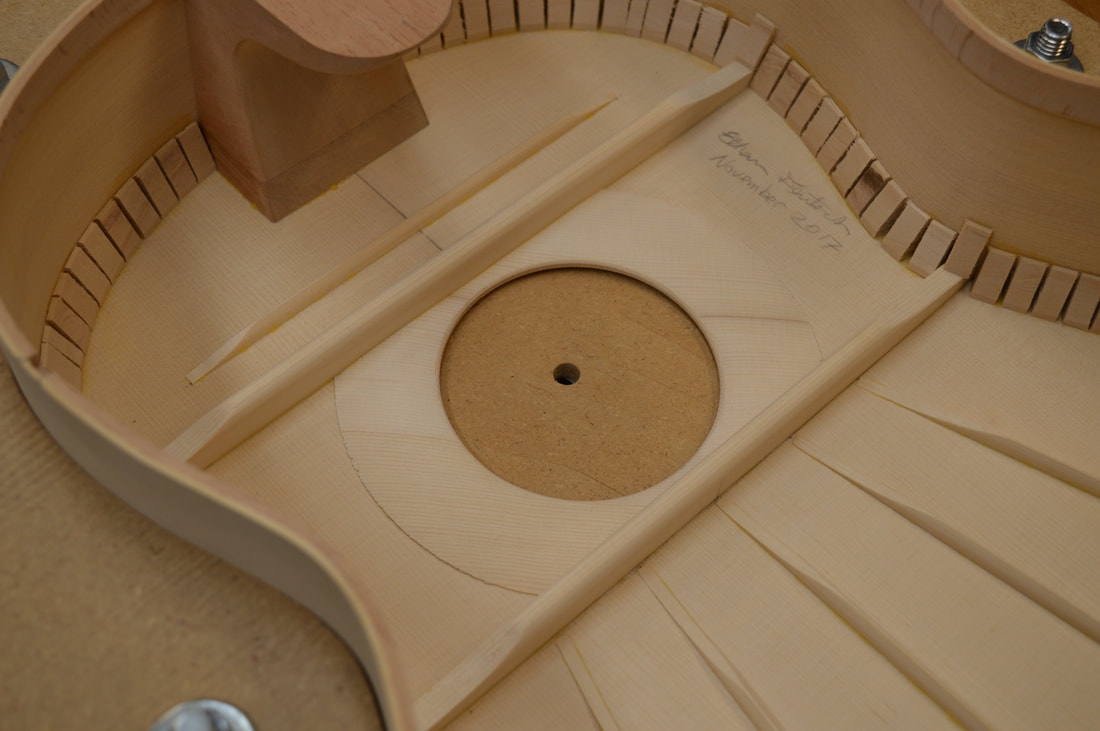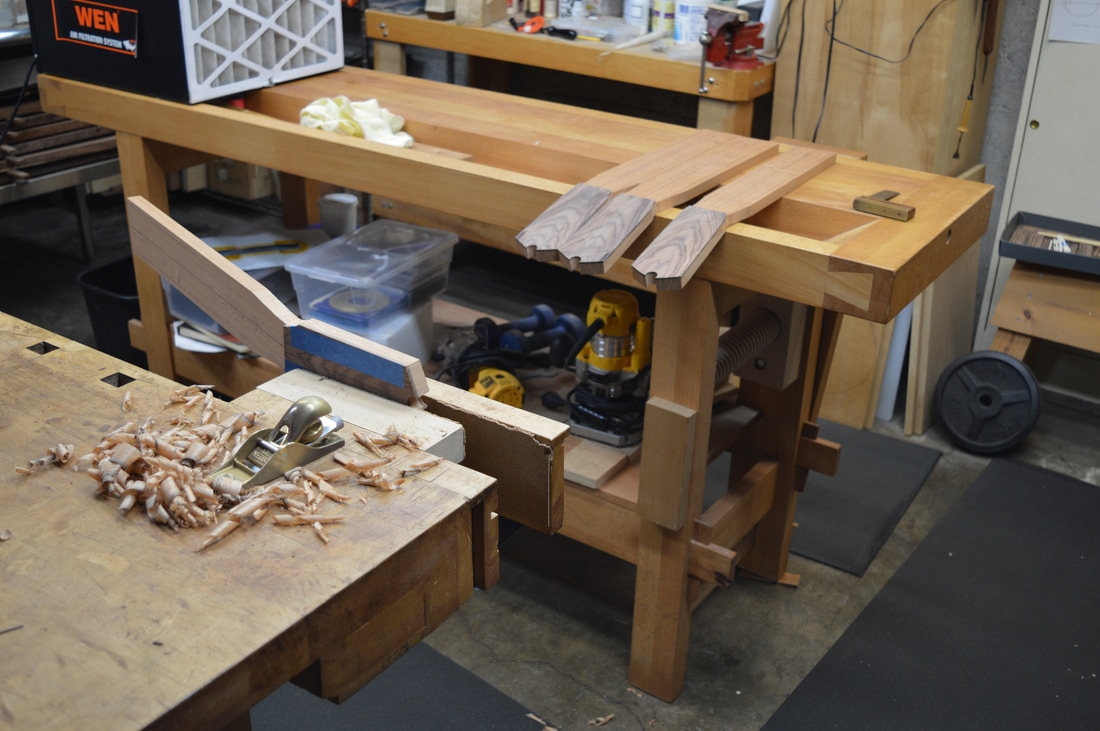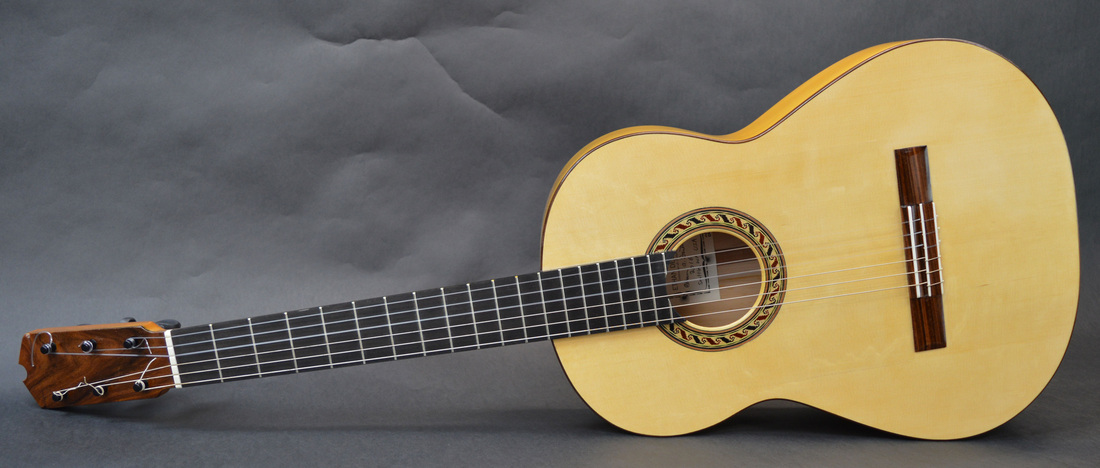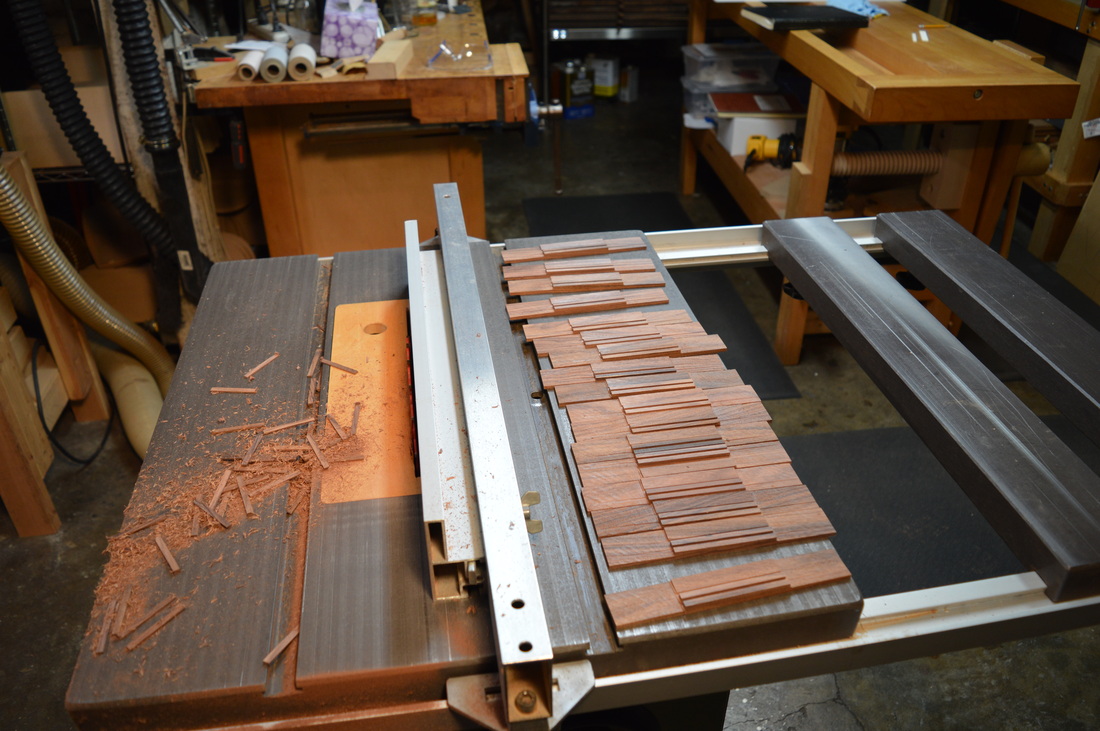|
"Hi, Ethan. Just wanted to remind you this guitar is incredible, gets better every day it seems and just discovering the ease and clarity of play even @ 19th fret!"
In a recent online forum discussion among luthiers about the differences between guitarras flamencas blancas, guitarras flamencas negras, and classical guitars, I posted the following:
To me, a blanca (cypress back and sides), a negra, and a classical guitar are generally distinct. The soundboards of traditional flamenco guitars, as opposed to classical guitars, are either thinner, or braced more lightly--or both--which gives the sound of flamenco guitars more of a rough, raw, raspy character. Often the backs and sides of flamenco guitars are also thinner, though not in the case of mine. I use spruce almost exclusively for soundboards. Although I am afraid that talking about sound quality may be like dancing about architecture, I think a proper flamenca blanca has low sustain and what used to be called a "tinny" tone--less full and round, more fundamental, I suppose, and somewhat rough around the edges. The sound of an Indian rosewood negra is close to that of a blanca, but with more depth. I find that other rosewoods, such as Bolivian (Santos) or Brazilian, give a mellower, more refined sound, as does hard maple. Classical guitars have more sustain and projection--more like a piano, perhaps. My classical guitars sound totally different from my flamenco guitars. And I keep the same body depth and plantilla for all my guitars. Currently the differences between my classicals and flamencos are the soundboard bracing--including the biggest brace, the bridge (and thus neck angle); the scale lengths (650 mm for classicals and 656 for flamencos, generally); and that I use a mahogany heel block for classicals, which I find adds sustain to an otherwise cedro neck. I came up with the name "Basic Model" while trying to avoid using the word "Segunda" ("Second" in Spanish), which is abbreviated by the numeral "2" followed by a superscript "a," sometimes referred to by English speakers as "2A." Many artisans sell their work that is not up to their usual standards as "seconds" and I didn't want to give the impression that there is anything inferior about this model in terms of sound quality or playability. There isn't. In terms of function these guitars are just as good as any of my others. I wanted to have something to offer at a lower price and realized that I could do this by eliminating some of the more subtle decorative elements. So these guitars don't have purfling lines beside the bindings on the sides or on the soundboard and they don't have mother of pearl inlay on the ends of the Pegheds tuners. Moreover, I may use rosettes which I made and then decided were not perfect enough for my more expensive ("Standard") model. Since my signature rosette design, the woven design of natural wood colors, is particularly difficult to make, I was thinking to exclude it from the Basic Model. So if you ask me to make you a Basic Model guitar with my signature rosette design, I am apt to quote you a slightly higher price than for simply a Basic Model. Thank you for understanding.
|
AuthorEthan Deutsch, Luthier Archives
June 2024
|




 RSS Feed
RSS Feed